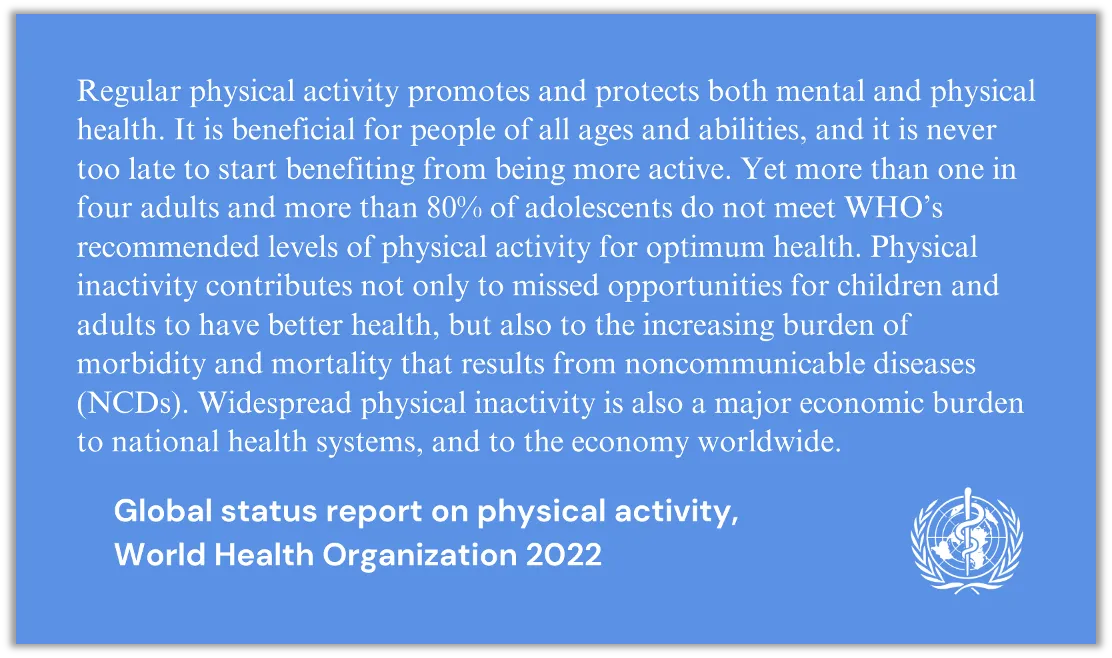Long-term Health and Fitness: What works for me
As the holiday season is upon us, it's essential to tread lightly on the path of health and fitness. However, instead of preaching about what you should or shouldn't do, let me walk you through my own approach and share some strategies that have proven effective for me.
In the world of sustainable fitness, moderation and consistency reign supreme, even during the most indulgent times of the year.

It’s a couple of weeks or so till Christmas, so I thought it opportune to talk a little about my approach and share some of my strategies – particularly to show you how I use them to good effect during this annual merrymaking period.
The festive season comes with obvious health and fitness challenges, traps and pitfalls. Yearend parties, celebrations, more eating than usual, and definitely less exercising – at least these are the things that my audience usually does. Or doesn’t do. And it is all too easy to become caught up in the whirlwind of overindulgence.
But rather than tell you what you should or could do, or what you must avoid etc. – I’m simply going to explain what I do and eat for sustainable fitness. If you’re familiar with my work, you’ll know I follow the Sensible Fitness Program (SFP). I pretty much do the same thing all year round, as I describe in the book.
A quick note before we proceed, particularly if you’re not acquainted with me: my program is largely antithetical to what the mainstream health and fitness industries promote.
Why?
The answer is simple: global statistics continue to show worsening health and fitness numbers – and a steady increase in obesity. In other words, conventional solutions are failing us.
But don’t take my word for it. Here’s the World Health Organization’s global status report on physical activity from last year.

WHAT ACTUALLY WORKS
Even though we have decades of proof, as a society – even with all the tools and facts at our fingertips – we choose to avoid doing what makes us fitter and healthier.
But even if you do decide to try my example, you need to know that without a committed, consistent approach, you’re not going anywhere.
Long-term (or sustainable) health and fitness stems from consistency in the key daily choices you make – that add up to a significant impact on overall well-being.
THE 3 MAIN COMPONENTS
- Regular exercise,
- Enough wholesome food,
- Recovery and leisure/relaxation.
PHYSICAL EXERCISE
Which activities does my program involve?
- A very practical set of 3 strength-training sessions and 3 cardio workouts per week.
My overall exercise time is short, and the protocols are simple. This is largely why it’s easy to stay the course. I trade volume for intensity. One might be easier, but it takes longer. The other is efficient and leaves me more time for other things.
It’s well-known that the routine you consistently engage in is far more effective than the "best workout" that you never actually undertake. But this can only be possible if it’s practical and delivers results. Having followed these protocols diligently for more than 20 years, I’m living proof of this.
I will say, though, that you do need to manage your time effectively if you want to succeed over the long term in making health and fitness part of your busy professional life.
WARNING: There are tons of "shortcut" programs on the market that can grant you the appearance of fitness, but the truth is that there are no shortcuts to actually being fit. Embracing fitness as a genuine lifestyle is the only path to true and lasting success.
Besides dismissing the appeal of fitness gadgets that promise miraculous results, I also train primarily at home. Even though I enjoy gym workouts, SFP is extremely simple to do anywhere.
My essentials are a sturdy bar for pull-ups and chin-ups, resistance bands, dipping bars and a few other portable items. In short, I take my program with me on business travel and for the holidays.
MY EATING PLAN
I always include my favorite meals!
I thought I'd lead with the best part ;) How do I do this and still manage to stay in shape?
- I use an 80/20 ratio between whole/unprocessed nutrition and the food I love in combination with a regular fitness program that includes both strength training and cardio.
Of course, what I eat includes all 3 macronutrients: fat, protein and carbohydrate sources. I find supplements to be largely ineffective, except for two: creatine and high-quality protein powder – really only required if you’re into elite-level training.
Bottom line: I consume real, nourishing and enjoyable food that elevates my performance and fully satisfies my palate and appetite.
How much protein do I consume?
I’ve experimented over the years and finally settled on this position: it’s far less of an issue than what the health and fitness industry wants us to believe. Over time, I've tried different types and portions, and I’ve tried various supplements too.
Low, medium or high protein, I find that there are negligible results and changes in my condition and overall health to warrant fixating too much. But for the sake of good health, I stick to moderate levels. That’s about 0.75 grams per pound of body weight. For me, this translates to roughly 150 grams per day.
3 BASIC SCIENCE FACTS FOR CONTEXT
- Weight gain happens when you take in more calories than you burn. You lose fat by eating less or exercising more, or the practical way – a combination of both. And by the way, the mirror and “how” your clothes fit are far better indicators than obsessing with the bathroom scale.
- Newbies to fitness will actually see an initial weight gain. Why? Muscle weighs more than fat. And more muscle/muscle tone means more calories burned. Even at rest. You need to think fat loss instead of weight loss. Yo-yo dieters are experts at getting this wrong.
- Starving yourself into shape without exercise is painful, tedious and unsustainable. You will have to reckon with continuous alarm signals to your brain, courtesy of leptin – commonly referred to as the satiety or starvation hormone. It helps inhibit hunger and regulate energy balance so that your body doesn't trigger a hunger response when it doesn't need energy. Starving yourself of calories is neither healthy nor sustainable. You'll be messing with your metabolism and risking the possibility of disordered eating.
I’ve read several health and fitness articles in my time. One that I always remember – because I was flabbergasted – includes this tip: “If it tastes too good, spit it out.”
Now, maybe you can fool yourself (and your psyche) for a while, but let me assure you that through this kind of slow-burn deprivation, primal instincts will strike when you least expect it – like on a day when you’re maybe feeling a little low. And we all get those days! When that happens, your impulse control is sure to fail.
Let common sense and moderation prevail.
MY FAVORITE TOOL FOR NAVIGATING THE FESTIVE SEASON – AND BEYOND
Rather than relying on deprivation, I say that the kind of self-control you want is one based on knowing you have permission to eat from all food groups, within reason – because you’ve got that sensible eating plan in your back pocket.
I do this using intermittent fasting on most days. Mindful that I get to eat my preferred meal for supper means I comfortably manage to “behave” during the day in terms of adherence and compliance.
Indiscriminate eating usually tends to occur when people have no real eating approach and try to “wing” it. And it’s exactly why winging it ultimately leads to weight gain. It’s well documented that eating high-carb foods thwarts satiety, stimulating the appetite, and increasing the probability that we will eat more.
This doesn’t happen when you have a sustainable and reliable eating plan, whether you incorporate intermittent fasting or not. Body fat loss is easiest when you combine strength training, cardio and sensible eating. This is the only way to a sustainable solution.
By the same token, intense regular exercise isn’t a licence to eat indiscriminately. In other words, you can’t outrun a bad diet.
Festive season or otherwise, my approach remains largely the same.
TAKE HOME MESSAGE
Ultimately, the best and most sustainable fitness program is the one that effortlessly fits into your life – supporting, rather than disrupting your lifestyle.
Even though I follow SFP and promote it as an excellent solution for busy middle-age pros, there’s no one-size-fits-all solution.
However, through consistent commitment, mindful self-awareness, trial and error, and an unwavering belief in your potential, you can unlock the door to a lifetime of health and vitality.
In fewer words, the best fitness program is the one you’ll stick with.

